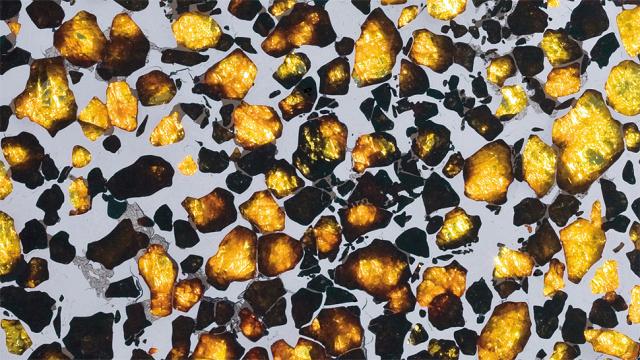A few weeks ago, Russian divers extracted a 567kg chunk of the infamous Chelyabinsk meteorite from a lake where it landed on February 15. The massive space stone ended up cracking into three pieces — and though scientists may have cursed the clumsy divers, I was interested in something else: What was inside the rock?
Scientists have uncovered more than 12 fragments of the Chelyabinsk meteorite from the lake so far. One sample has been classified an LL5 chondrite (a stony meteorite) with very low levels of iron, and is made up of silica, nickel and cobalt compounds — more on that in a second.
The Chelyabinsk meteorite made a huge impact on our collective consciousness, but it’s far from the only space rock scientists have split open. I’d like to show you a few more meteorite innards, because they’re far more amazing than you might imagine. 30 ethereal, extraterrestrial gems await you below.
This is a 112.2 gram fragment of the Chelyabinsk meteorite, which was found in a field. The broken fragment displays a thick primary fusion crust with flow lines and a matrix with melt veins and planar fractures. That’s all caused when the meteorite enters the atmosphere — the sheer heat causes the rock to melt, creating a glassy layer over its surface.
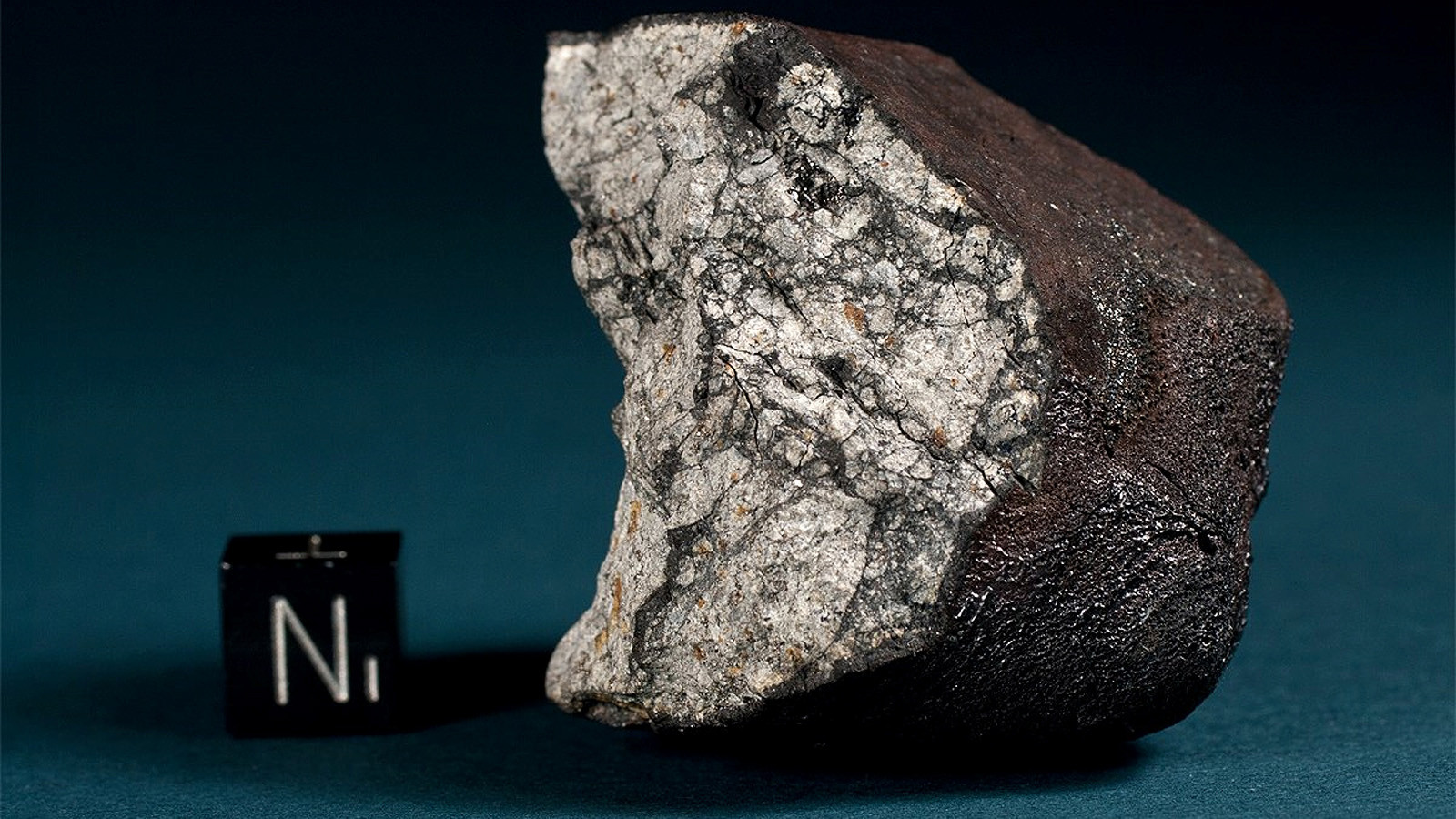
Picture: Svend Buhl/Wikimedia Commons
This image shows a rock from Mars that landed in the Sahara Desert. An examination of the Martian meteorite, known as NWA 7034, determined that it’s 2.1 billion years old and is water-rich.
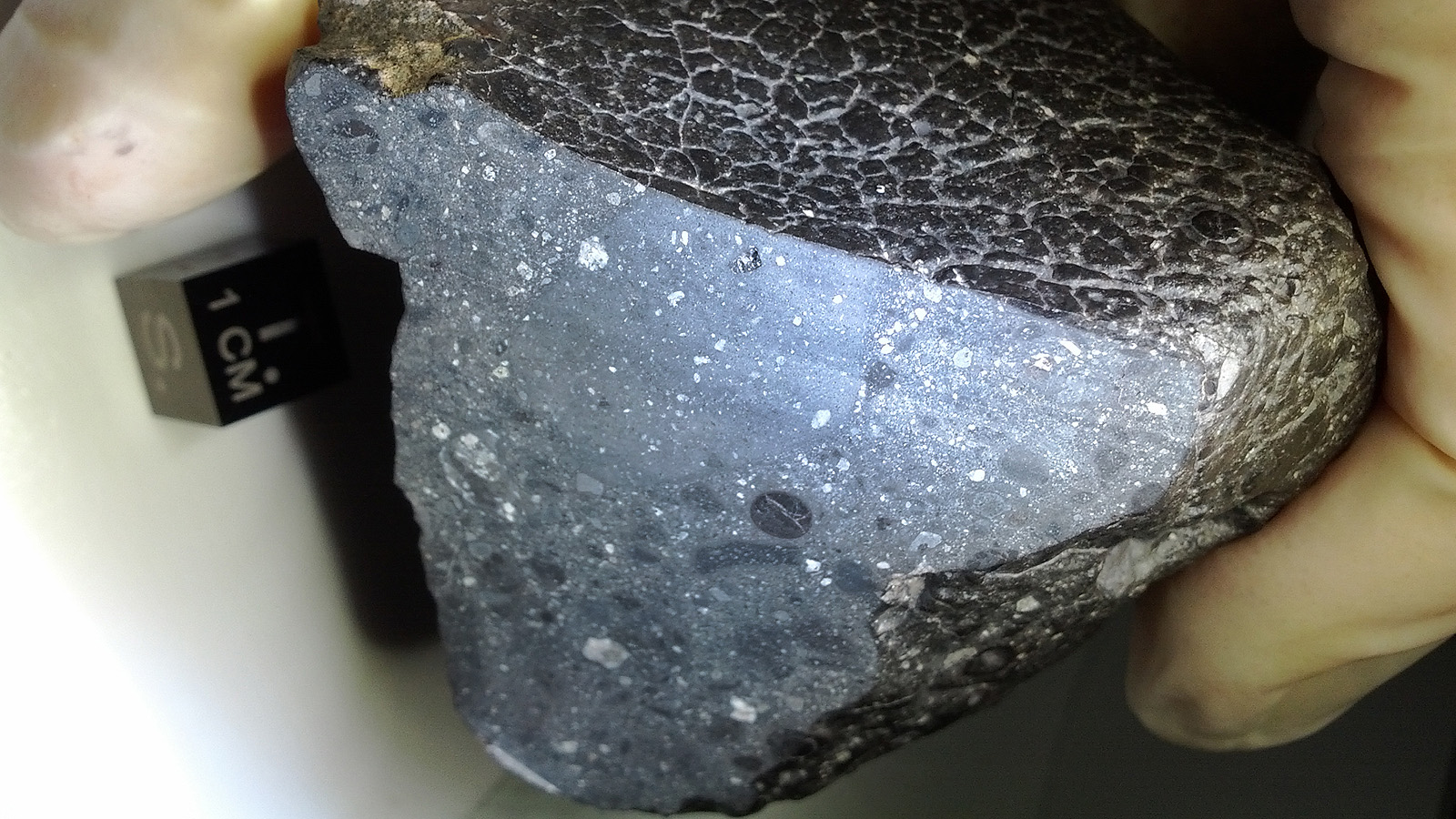
Picture: University of New Mexico, Carl Agee/AP
The 16-ton Willamette, an iron-nickel meteorite at New York’s American Museum of Natural History. It looks like a giant metal heart — but with its atriums and ventricles inside out.
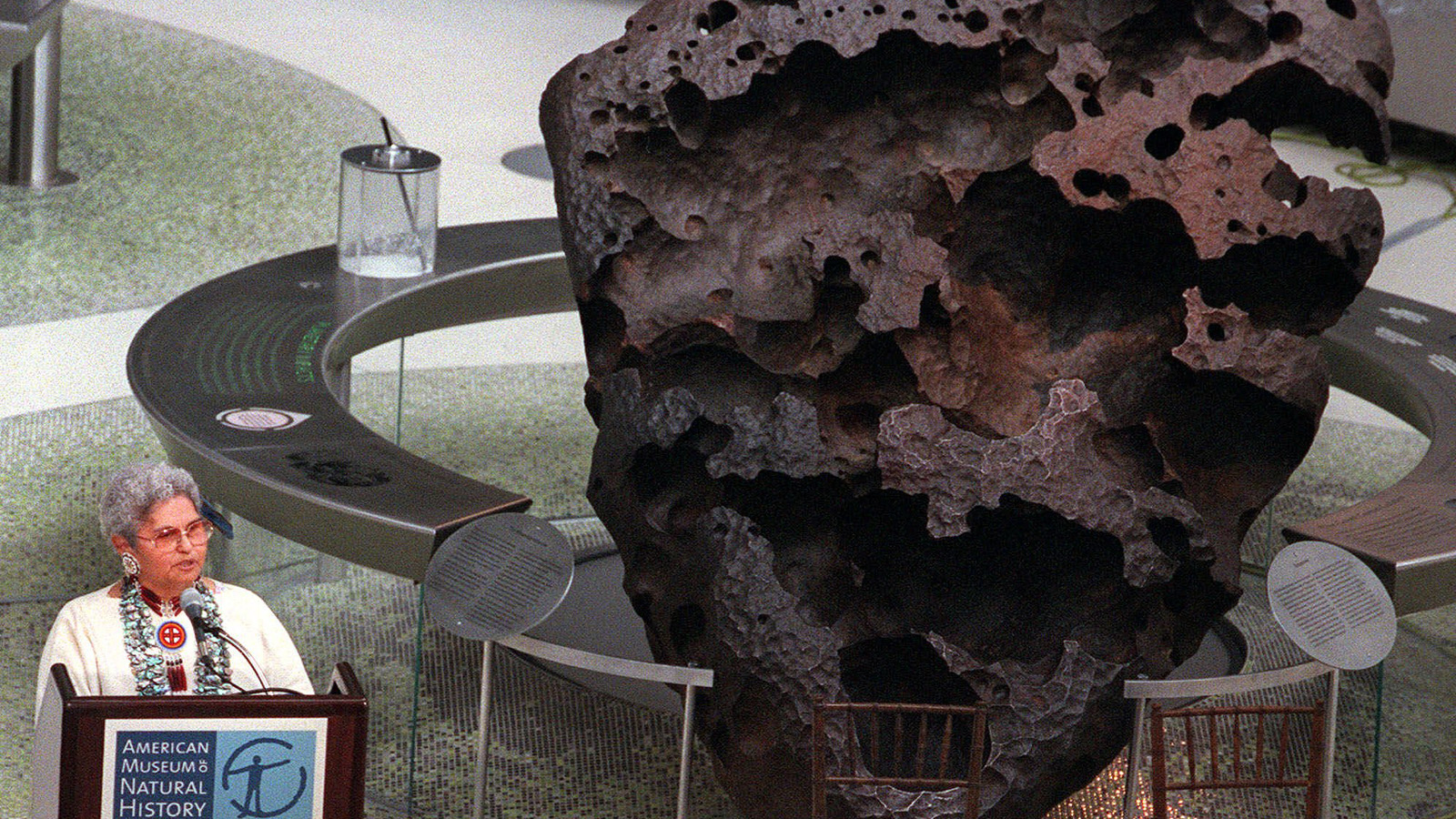
Picture: Keith Bedford/AP
The Muonionalusta Iron meteorite, composed primarily of iron and nickel, fell about one million years ago in northern Scandinavia. This sliced specimen features a unique Widmanstätten pattern (aka Thomson structure) of long nickel-iron crystals, characteristic of many iron meteorites.
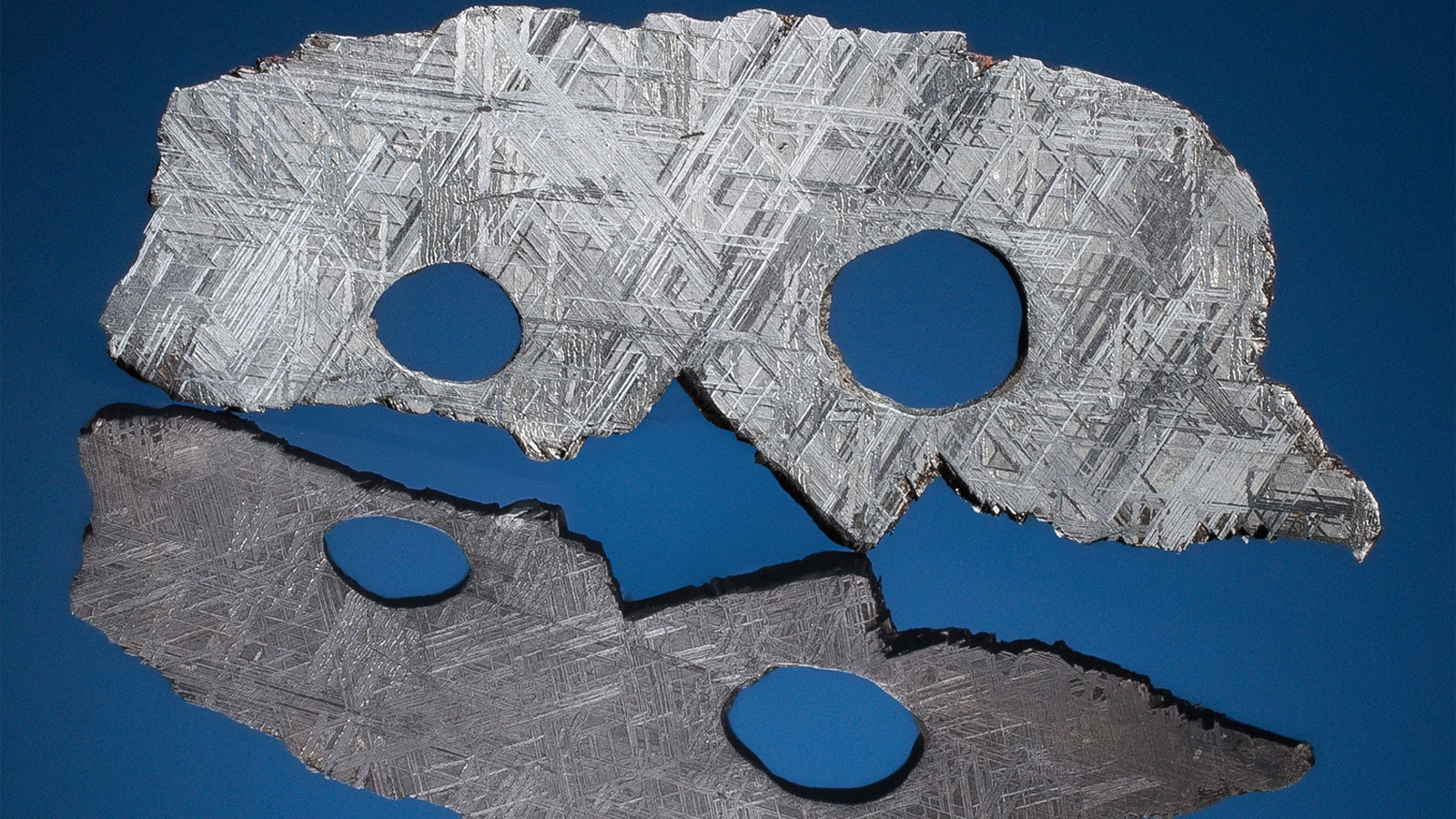
Picture: Heritage Auctions
This slice originates from a Seymchan meteorite found in the Magadan district of Siberia. Seymchan meteorites are pallasite meteorites, which means that they contain crystalline olivine (magnesium iron silicate, a common mineral), as seen in this specimen. Seymchan meteorites also contain high levels of iridium, the second densest element and most corrosion-resistant metal.

Picture: Heritage Auctions
Gujba, a bencubbinite meteorite, is a member of an extremely exotic meteorite class. It fell in northeastern Nigeria in 1984 and contains large metal and silicate nodules with variable amounts of troilite and calcium aluminium inclusions — which are among the first materials to have condensed out of the gaseous nebula from which our planets formed.
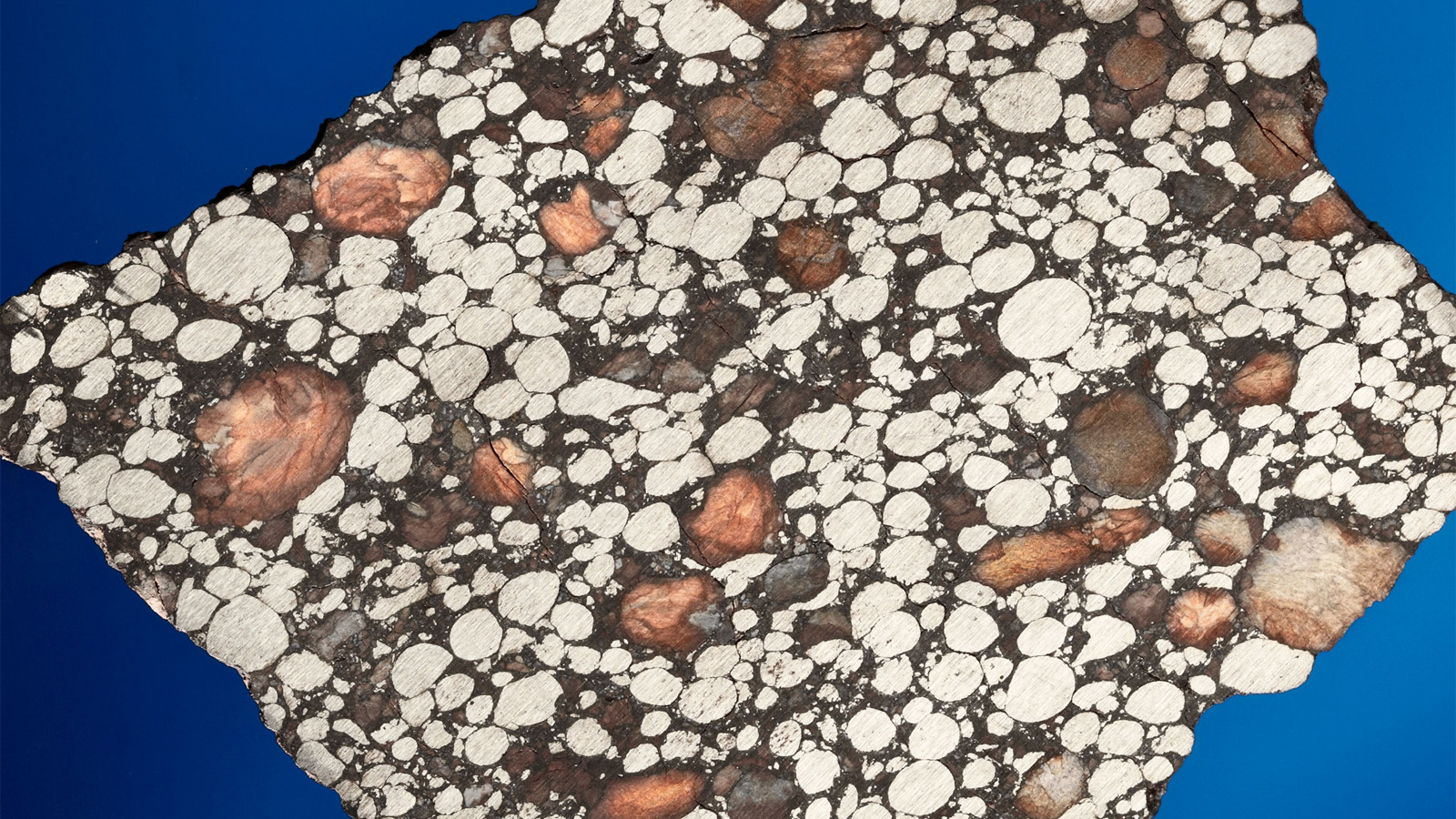
Picture: Heritage Auctions
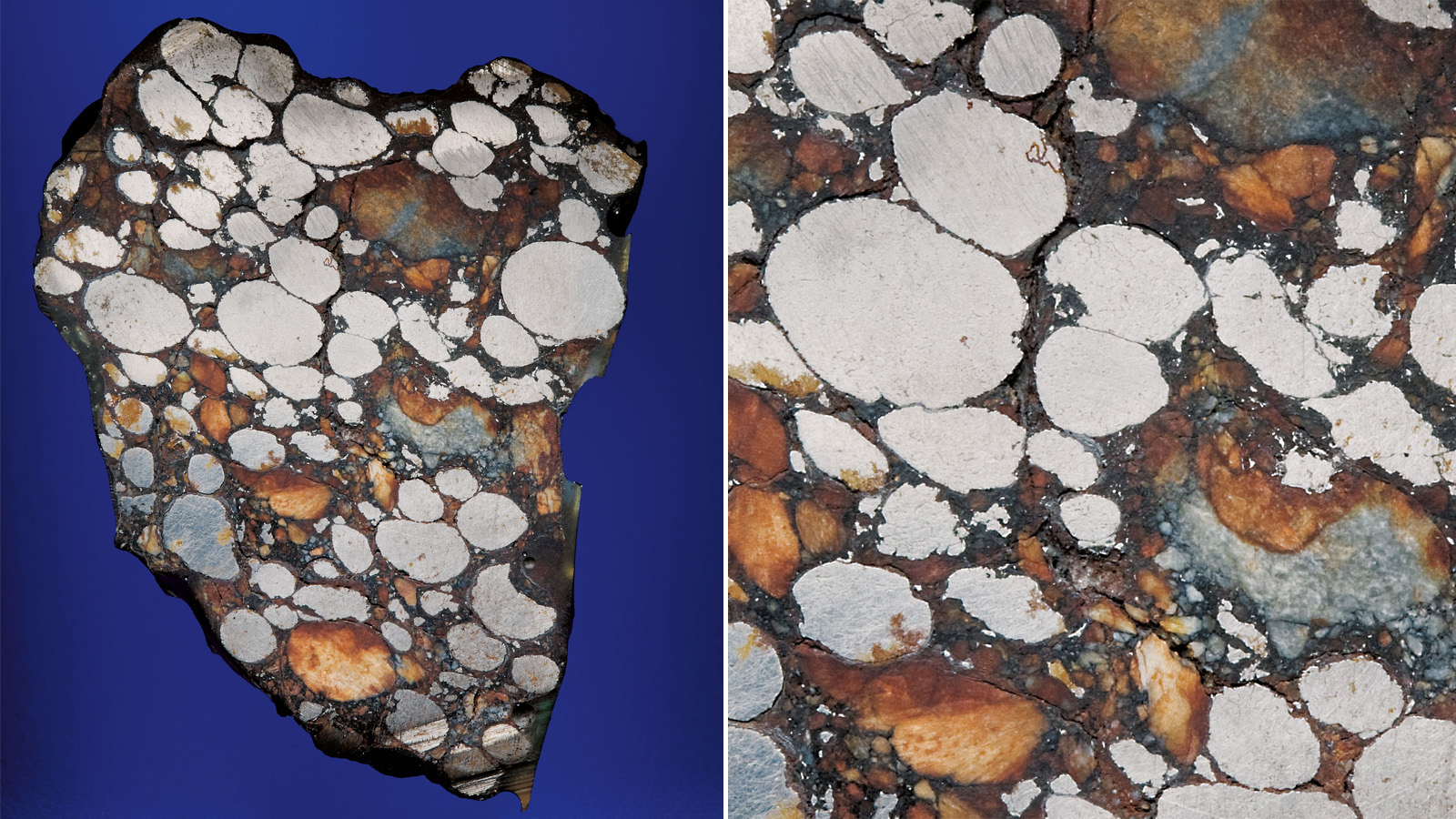
Picture: Heritage Auctions
This is what a Moroccan diogenite, a meteorite originating from the asteroid Vesta, looks like inside. This polymict diogenite experienced a great deal of metamorphism prior to its arrival on Earth, and features mineral clasts cemented into a dark, fine grain matrix.
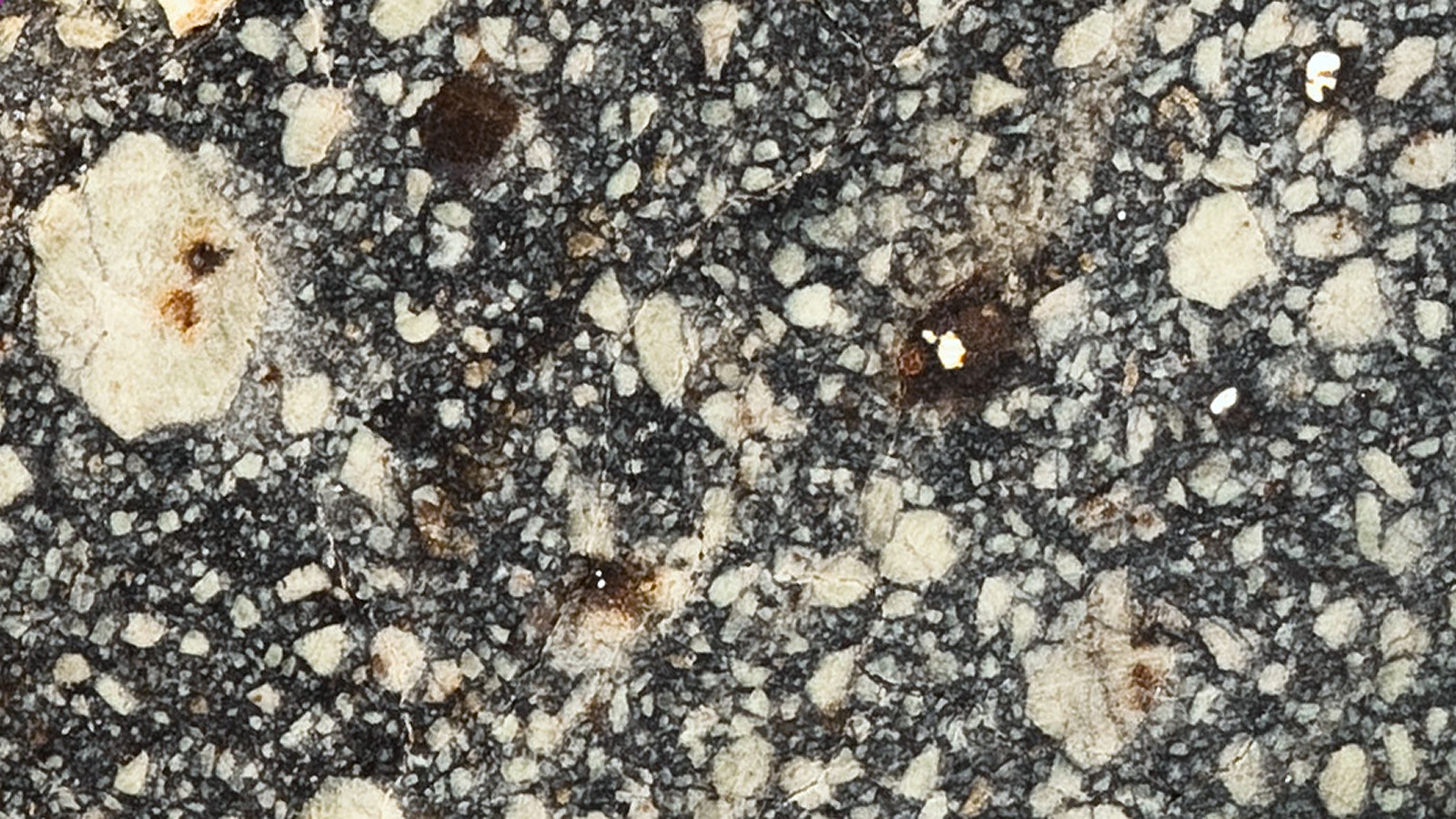
Picture: Heritage Auctions
This complete slice of the NWA 4233 iron meteorite (from Northwest Africa) features one of the more beautifully intricate fine octahedral crystalline patterns ever photographed.
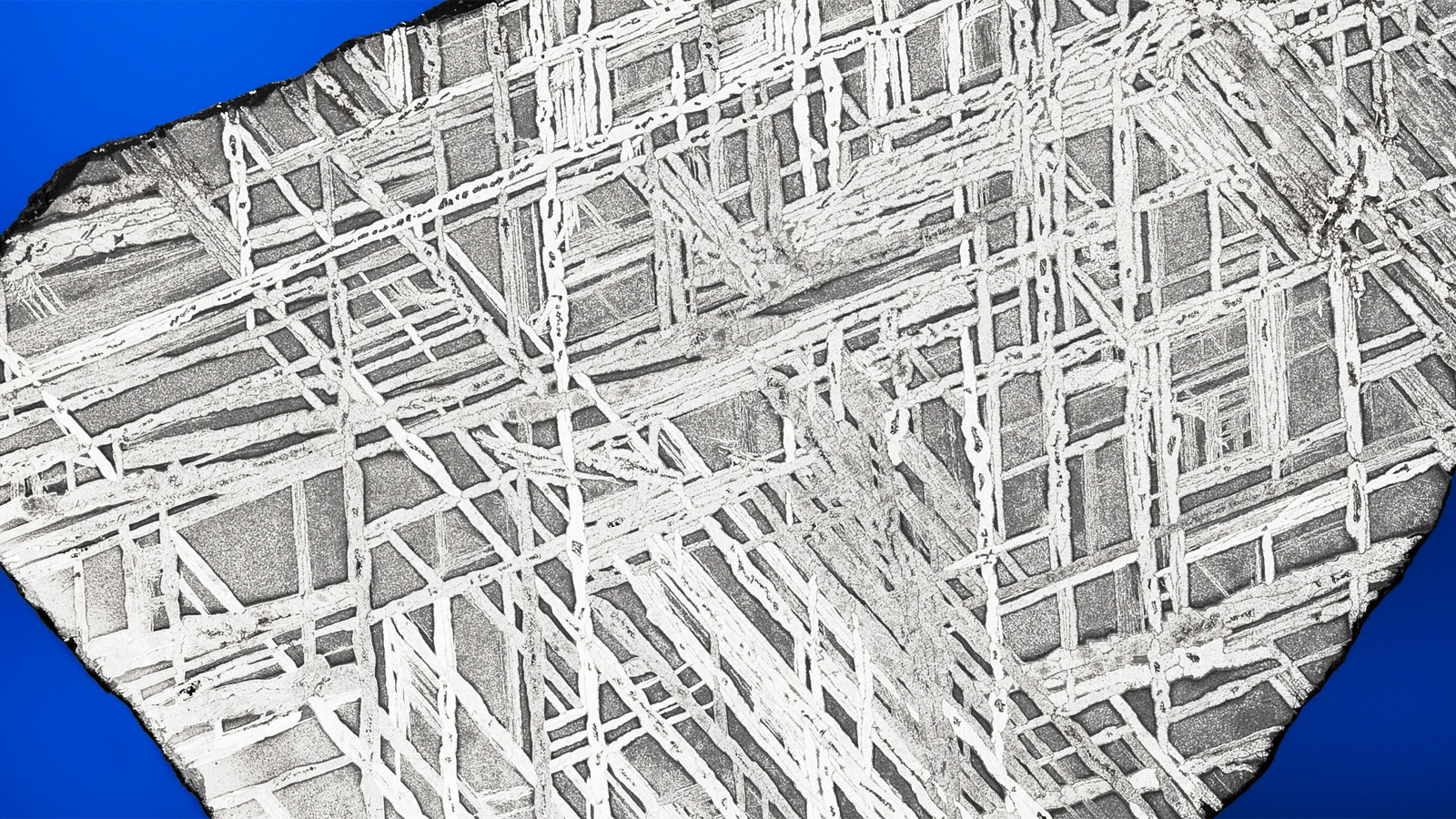
Picture: Heritage Auctions
Beautiful graphite nodule inclusions can be seen in this slice of the Canyon Diablo meteorite, from the Meteor Crater in Coconino County, Arizona. “It was the monumental force of the asteroid’s impact (the asteroid was travelling at a cosmic velocity of roughly 10 miles-per-second) that resulted in its nickel-iron matrix being injected into, and fully penetrating, the graphite – a phenomenon richly in evidence. Exquisitely ornamental, this is an extraordinary artifact of a cataclysmic collision frozen in time.” (Heritage Auctions)
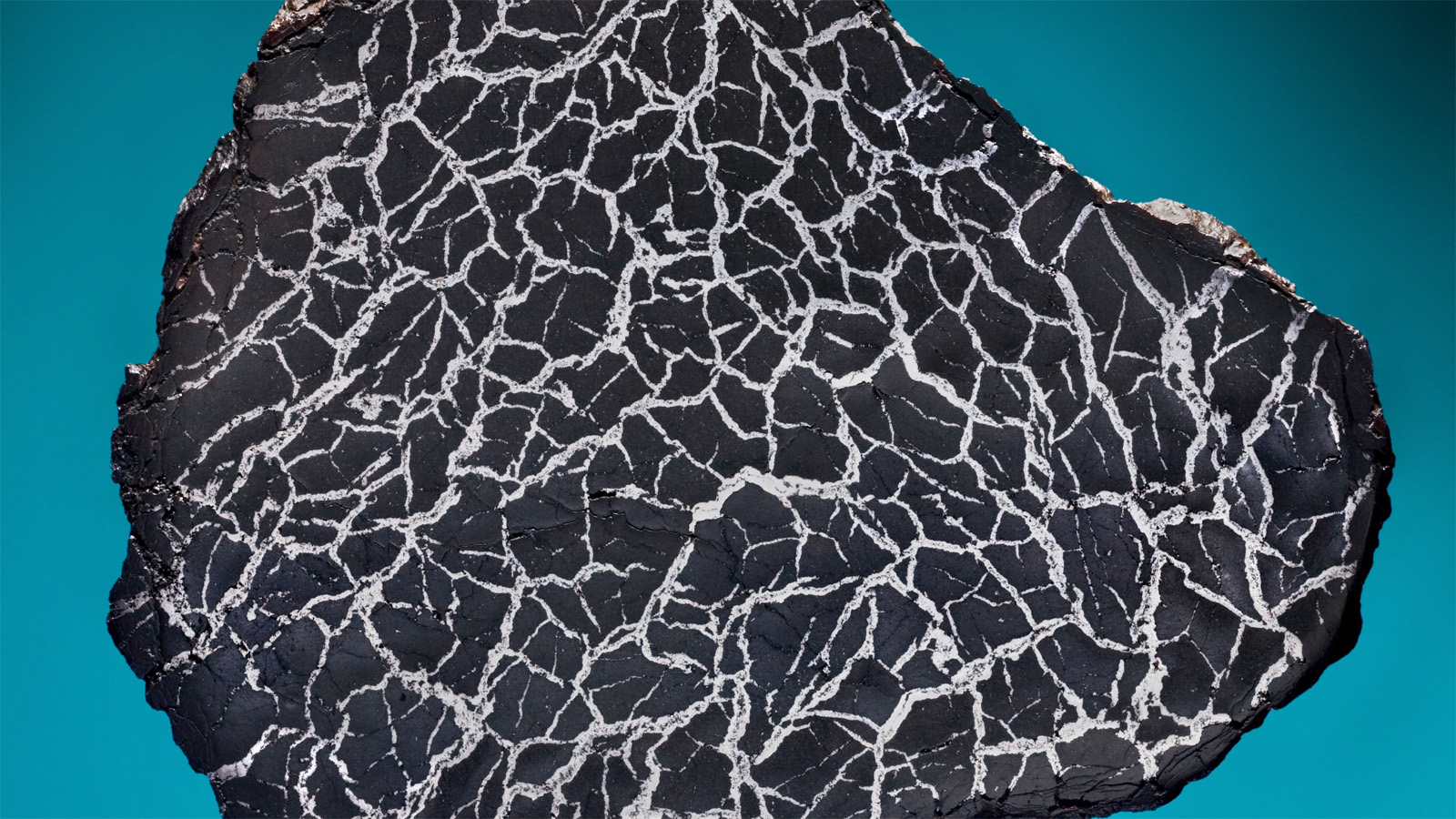
Picture: Heritage Auctions
Pallasitic madness! This meteorite is loaded with the mineral olivine. This is Imilac, the most sought-after pallasite, and the most sought-after meteorite at all. It was found in the Atacama Desert in Chile.

Picture: Heritage Auctions
Pallasites are extremely rare even among meteorites. Only about one per cent of all meteorites qualify — and they’re much desired by collectors.
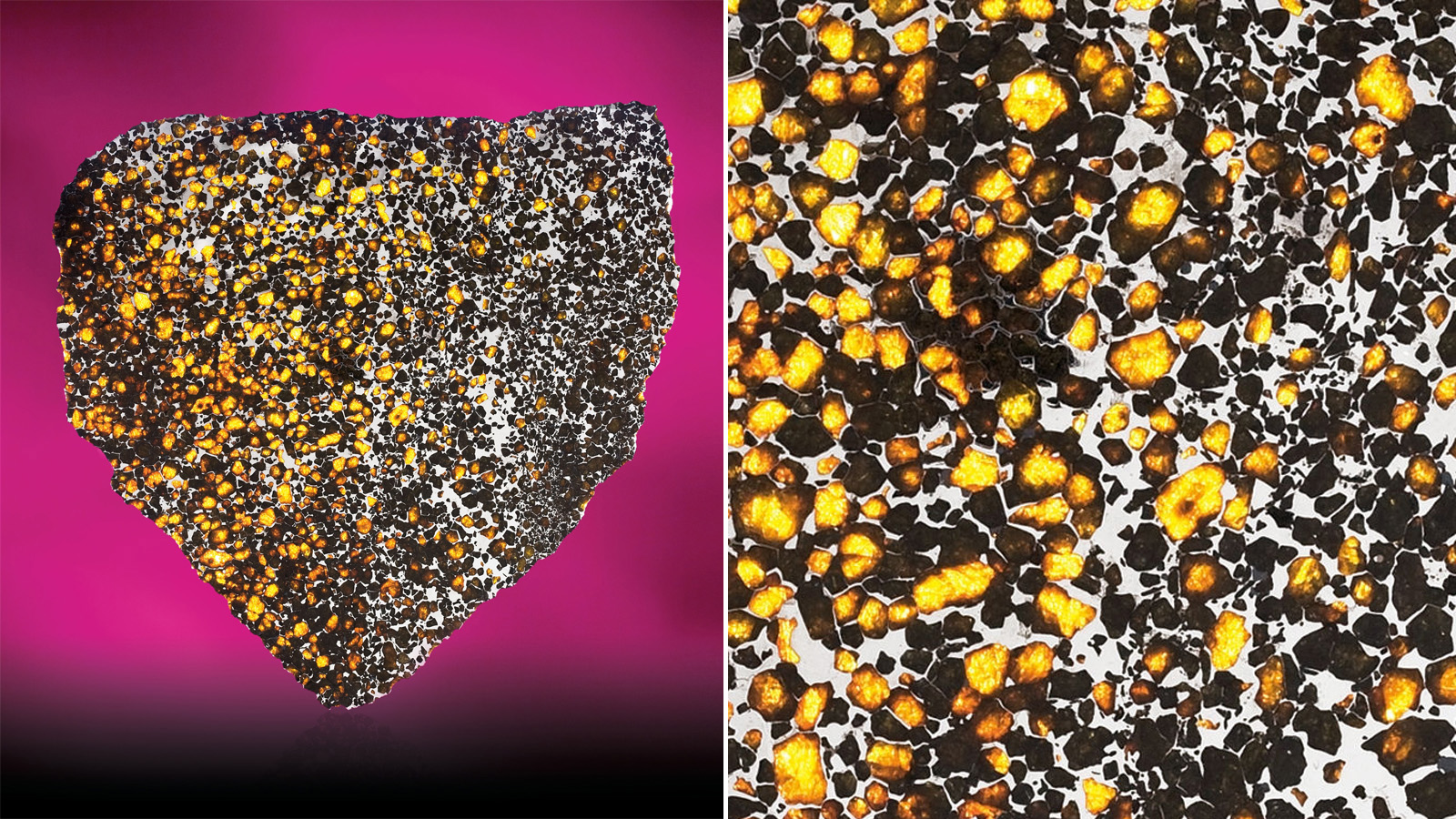
Picture: Heritage Auctions
Pallasites are composed of approximately 50 per cent olivine crystals and 50 per cent nickel-iron. They’re thought to be relics of forming planets.

Picture: Juan Manuel Fluxà
Unusually transparent Peridot crystals are hidden in the Fukang meteorite, discovered in 2000 in China’s Gobi Desert near the town of Fukang. Like Imilac, Fukang is a pallasite.
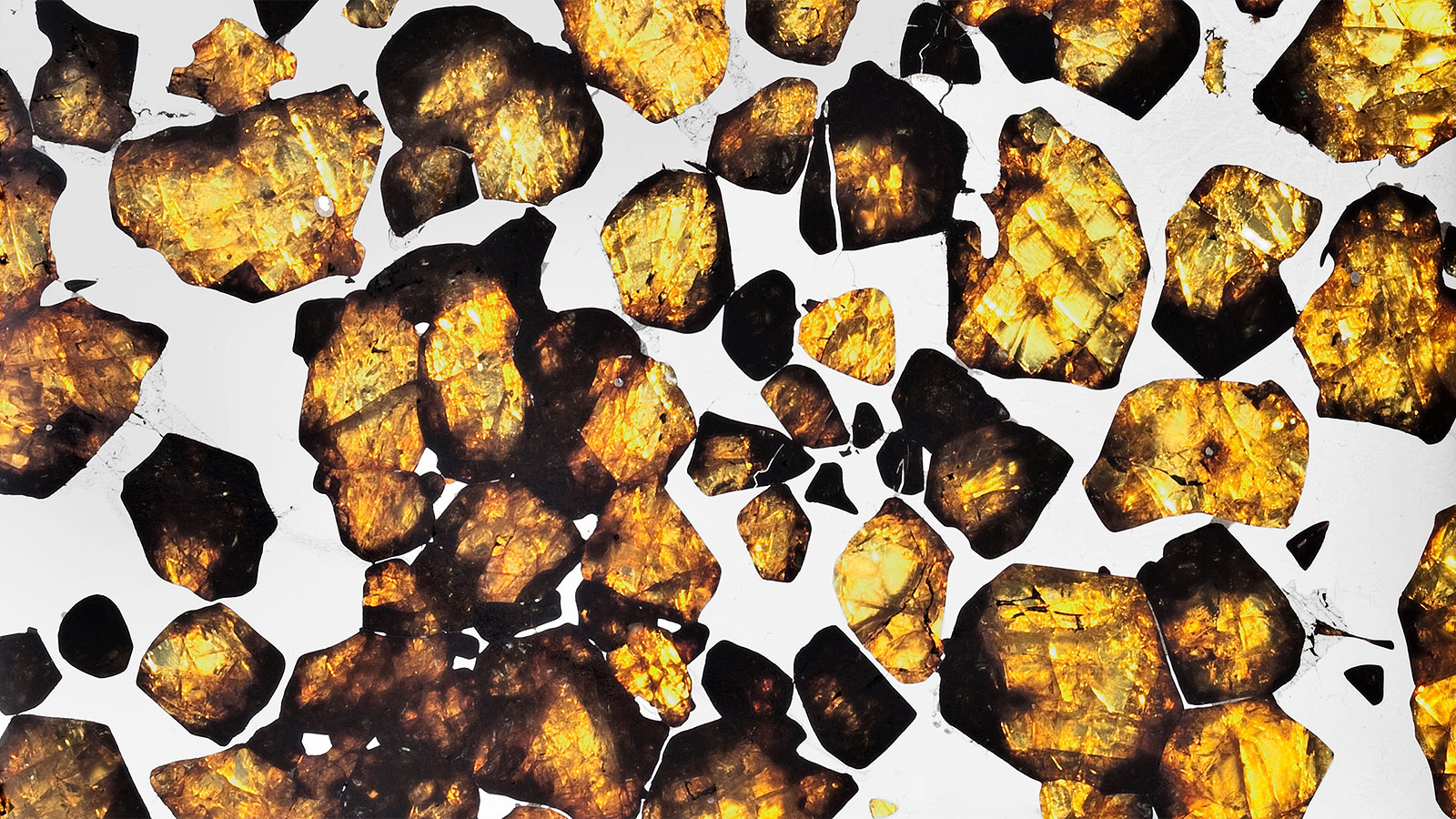
Picture: Heritage Auctions
The golden-green olivine crystals found in Fukang’s nickel-iron matrix are large and angular and, like Imilac, highly transparent.
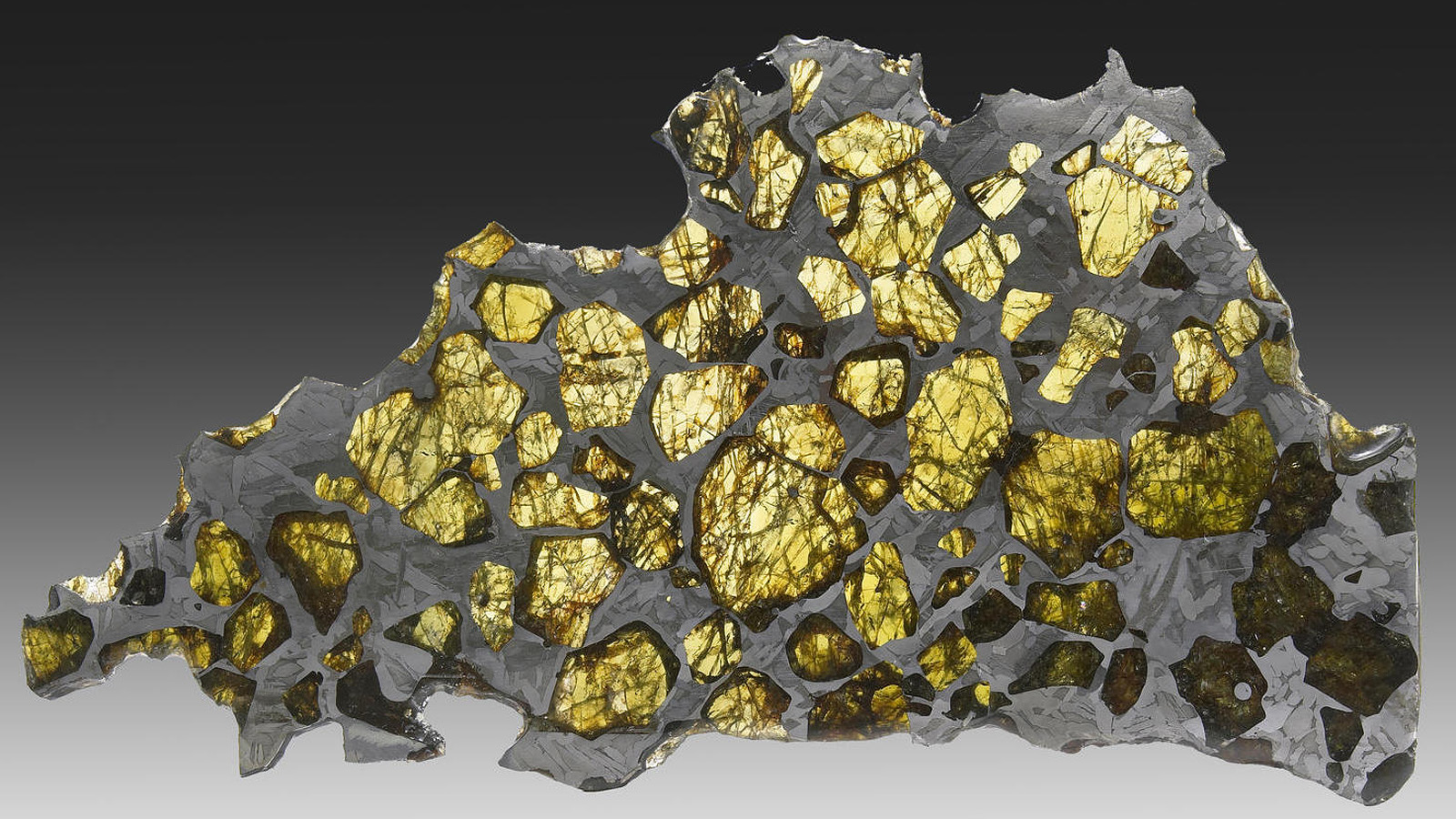
Picture: Bonhams Auctioneers
According to Heritage Auctions, “Fukang is destined to become one of the most magnificent meteorite discoveries of the 21st century. Weighing over 925 pounds (over 420 kilograms), it exhibits large, highly refractive translucent olivine crystals unmatched by other pallasites.”
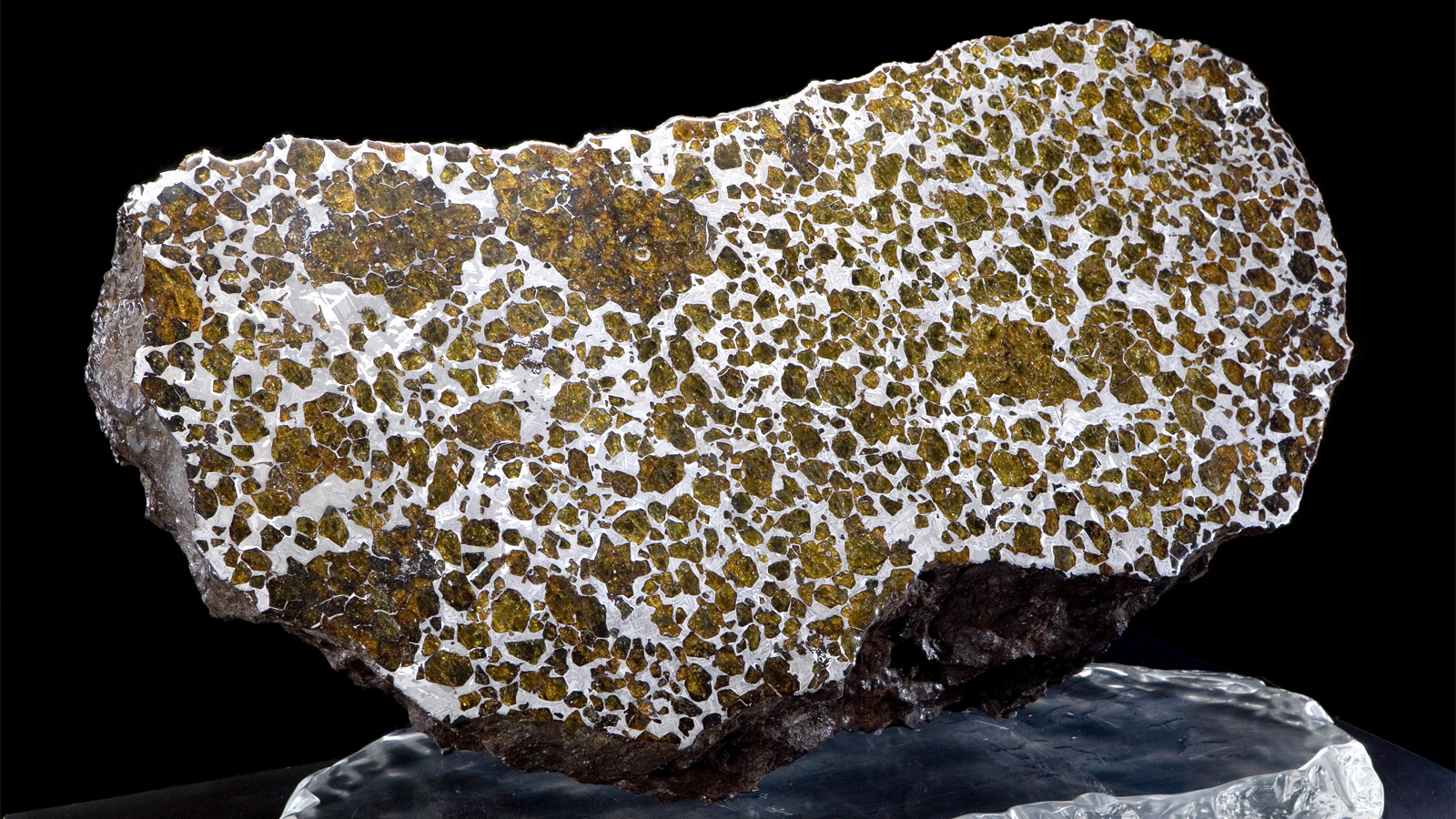
Picture: Bonhams Auctioneers
These translucent crystals are suspended in a nickel-iron matrix — part of a slice from a half-pound pallasite meteorite found at Glorieta Mountain, New Mexico. Comprising less than one per cent of all meteorites, pallasitic meteorites — named in honour of 18th Century geologist Peter Pallas — are by far the most dazzling of all meteorites.
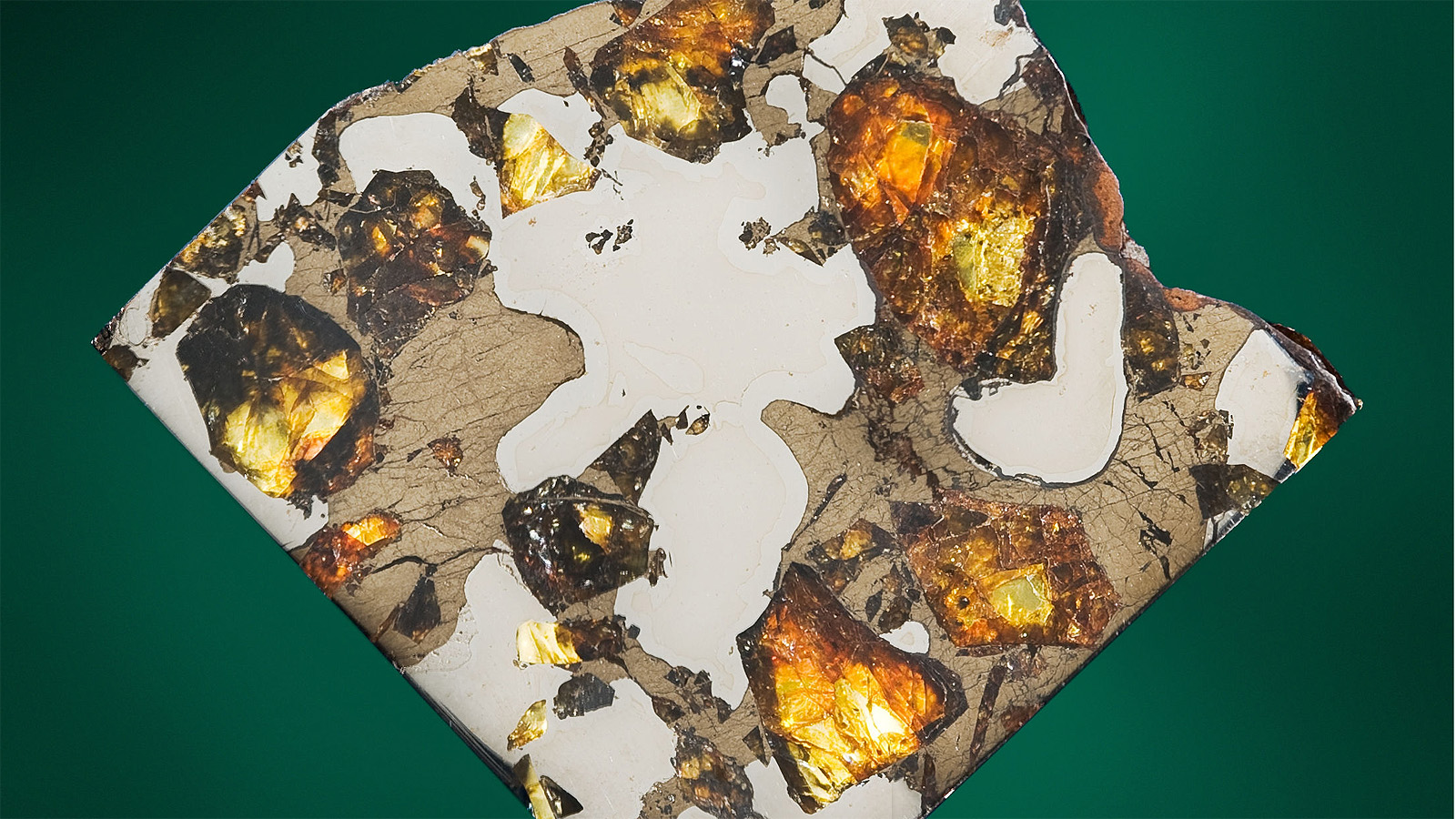
Picture: Heritage Auctions
Oh my god, it’s full of stars! The stone meteorite from which this sphere was derived was found somewhere in the Sahara desert. With an ebony matrix dusted with countless flakes of metal, this is a handsome example of a common chondrite.

Picture: Heritage Auctions
Recovered near the southern tip of Argentina, the Laguna Manantiales meteorite displays some of the most exquisite crystalline structures of any iron meteorite-structures.
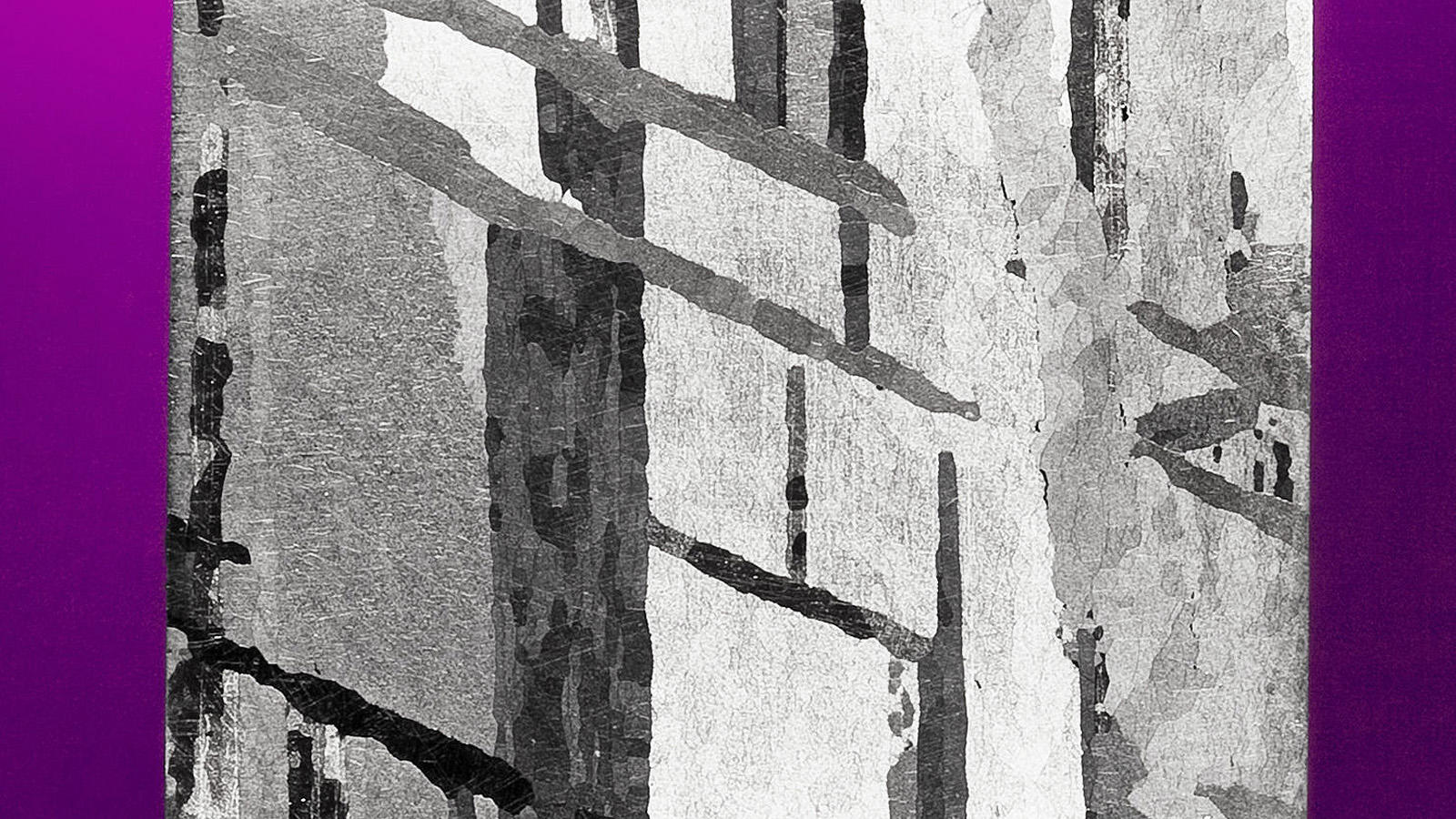
Picture: Heritage Auctions
This end piece shows the fine octahedrite internal structure of a Gibeon iron meteorite, found in Great Nama Land, Namibia.
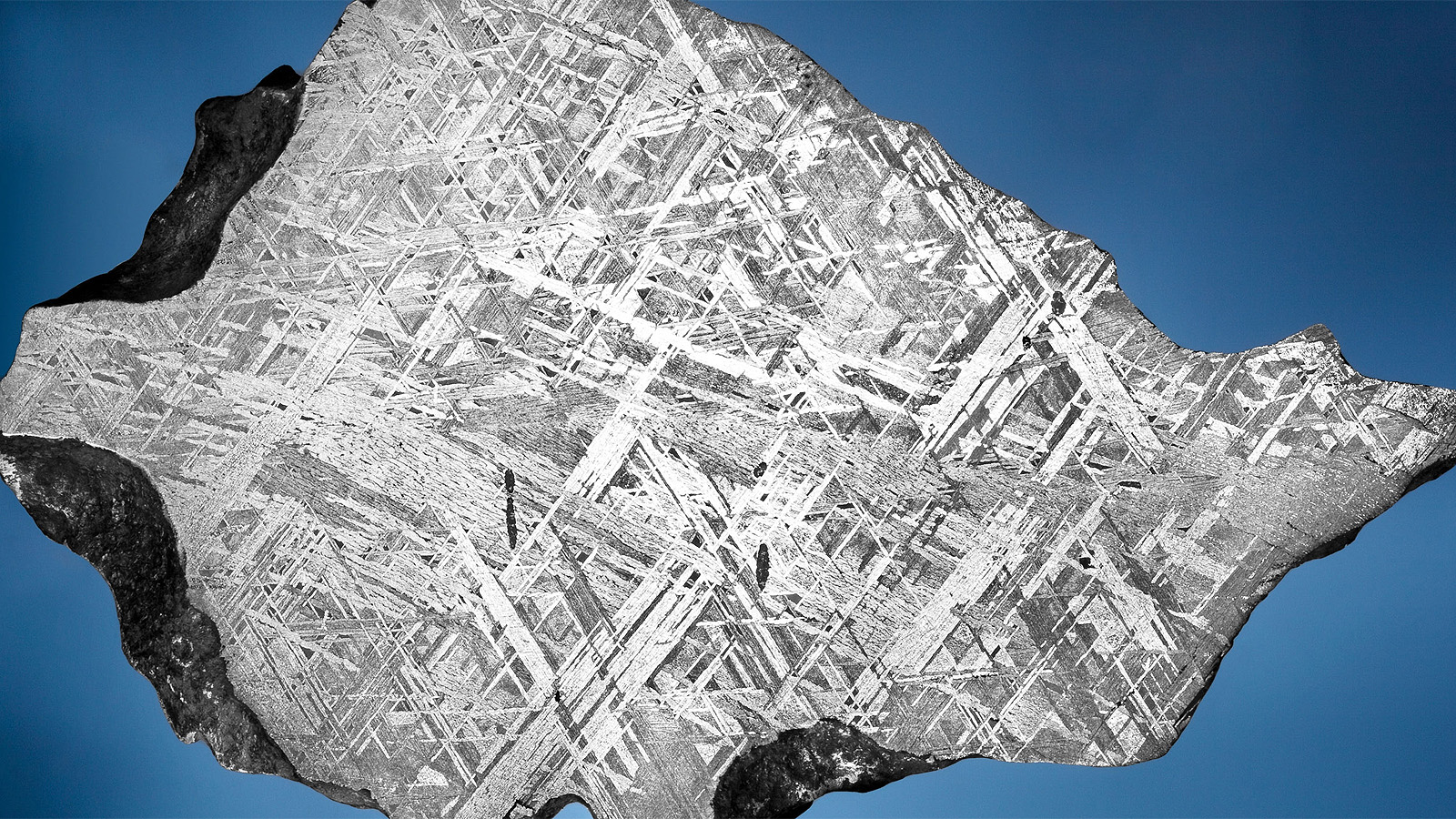
Picture: Heritage Auctions
This iron medium octahedrite, called Mundrabilla, was found on the Nullarbor Plain, Australia, in 1911. These meteorites were part of a massive meteorite shower about one million years ago. A Mundrabilla is rich with sulphide, silicate and graphite inclusions. As a result of its long tenure in the Nullarbor, its sulphide inclusions oxidised, resulting in a nodular exterior surface and spectacular otherworldly matrix.

Picture: Heritage Auctions
This space rock was found in June 2006 in the Algerian Sahara. After oxygen isotope analysis, scientists realised that they had discovered an entirely new class of meteorites. This slice exhibits a large field of reddish, green and black high temperature silicates, primarily orthopyroxene and olivine, with a “leopard-spot” pattern of bright silvery nickel-iron injected into the silicates.

Picture: Heritage Auctions
This ultimately rare angrite (also known as a achondrite meteorite) may have come from the planet Mercury. It was found in the Sahara Desert outside of Morocco in 2004. It boasts a nice lining of fusion crust (created when the rock enters the atmosphere), large polygonal grains of pink-purple anorthite, shocked black olivine, and ruby-red spinel in a fine-grained matrix.
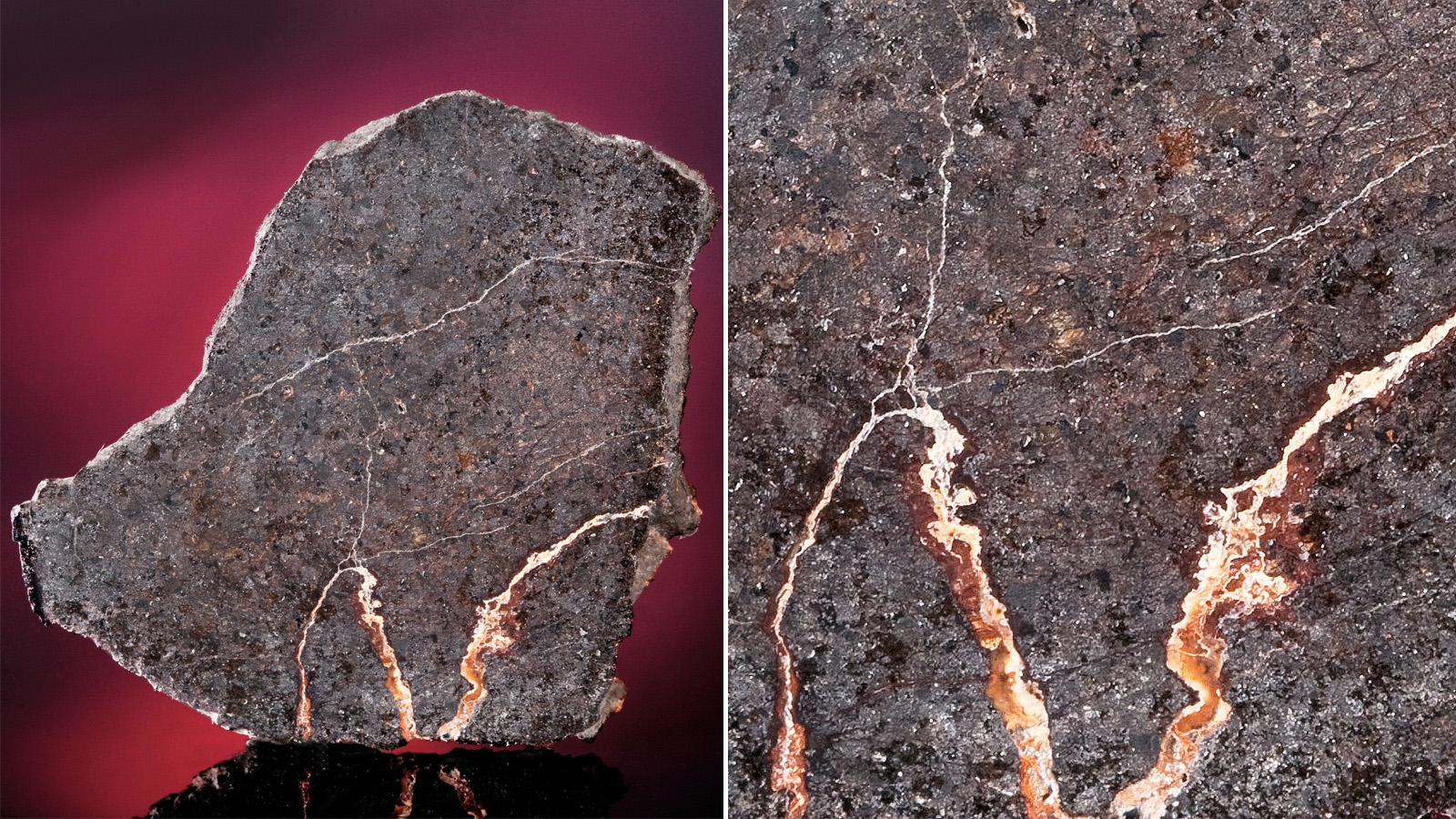
Picture: Heritage Auctions
This rare and unique rock from the Moon is one of the youngest lunar rocks ever found on Earth. It is a regolith breccia, which means that it is made of shock-welded lunar soil composed of fragments of many different kinds of rock and minerals, including fine grains and powders.

Picture: Heritage Auctions
A slice of a Martian meteorite, which was discovered in Dar al Gani, Sahara Desert, Libya, on May 1, 1998. Its spinach-green matrix is interspersed through with black olivine phenocrysts.
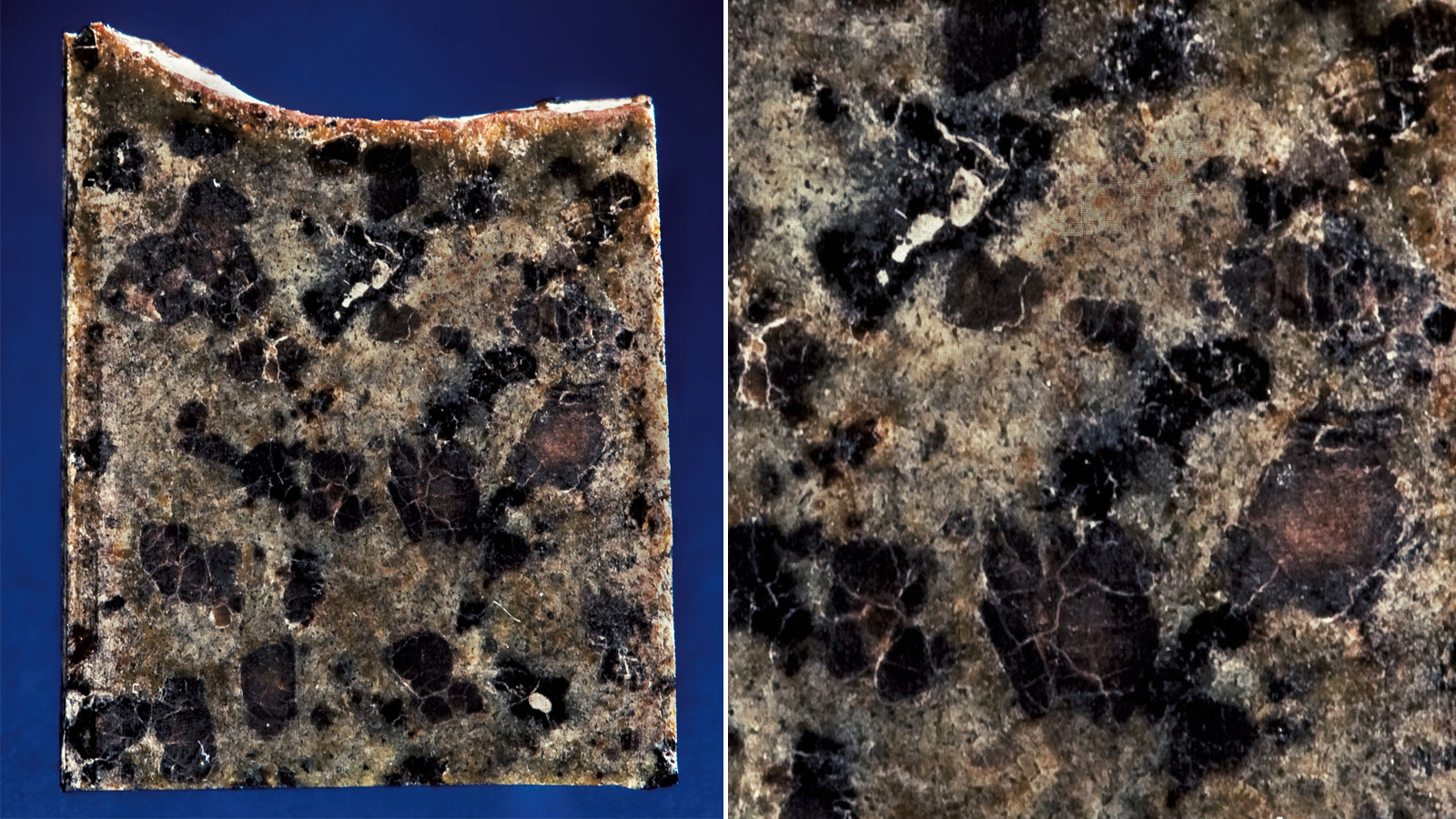
Picture: Heritage Auctions
There are only 50 known Martian meteorites, which makes them millions of times rarer than gem grade diamonds. This Martian Dunite — the rarest of all Martian meteorites — was found near Morocco. Scientists have published more than 20 scientific papers so far on this find. It has a dark, granular greenish-black texture with the predoinant olivine appearing to be almost black. It also contains a new type of mineral unknown to science.
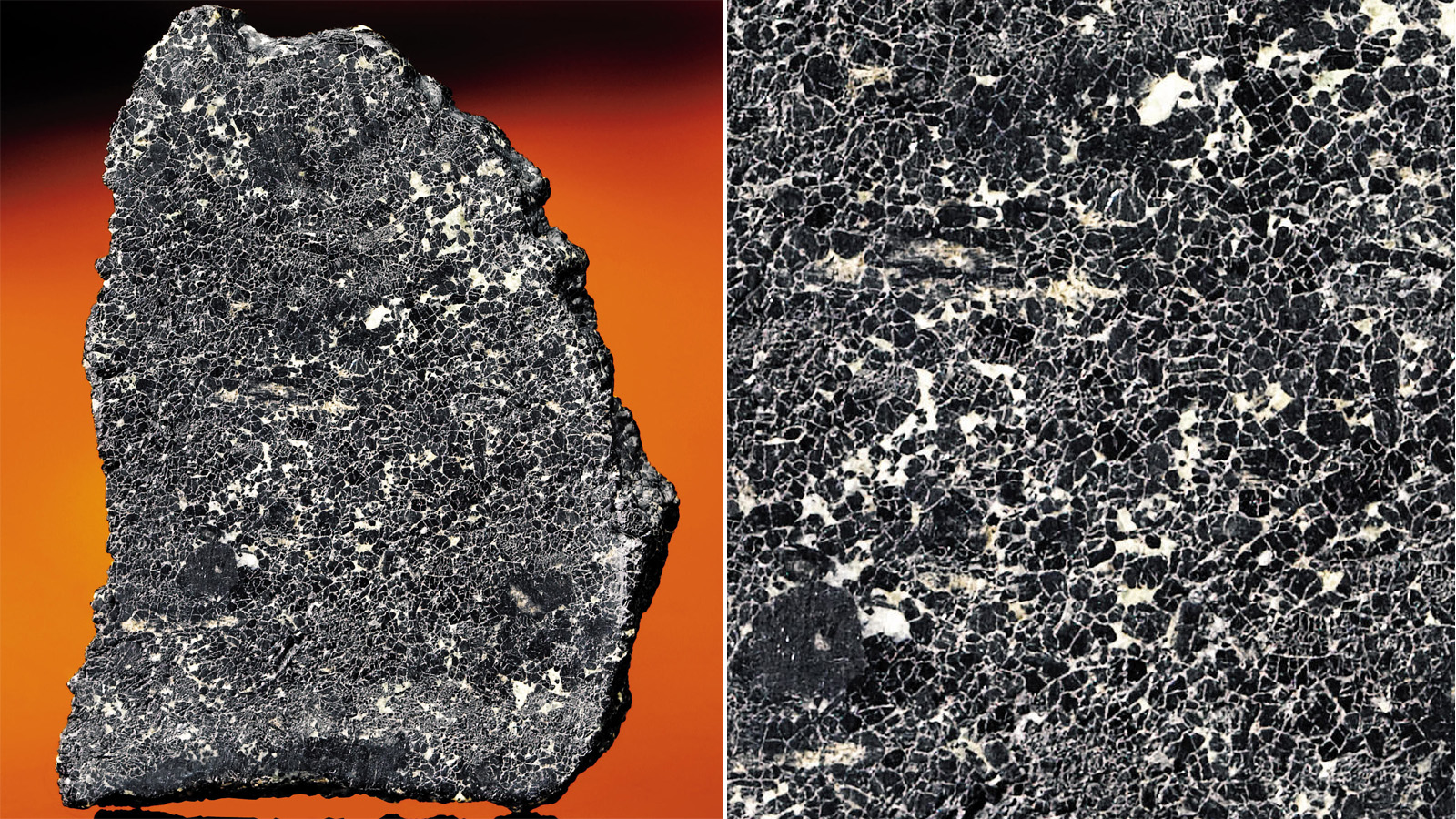
Picture: Heritage Auctions
This rare mesosiderite was found in 2005 in Northwest Africa. Mesosiderites are the rarest type of stony-iron meteorite, much rarer than the pallasites — they comprise only .4 per cent of all known meteorite types. This slice samples large metal spheres abundant along with uniform metal grains. The matrix between the metal is primarily composed of brecciated and partially recrystallised granular basalts that enclose larger subrounded olivine crystals
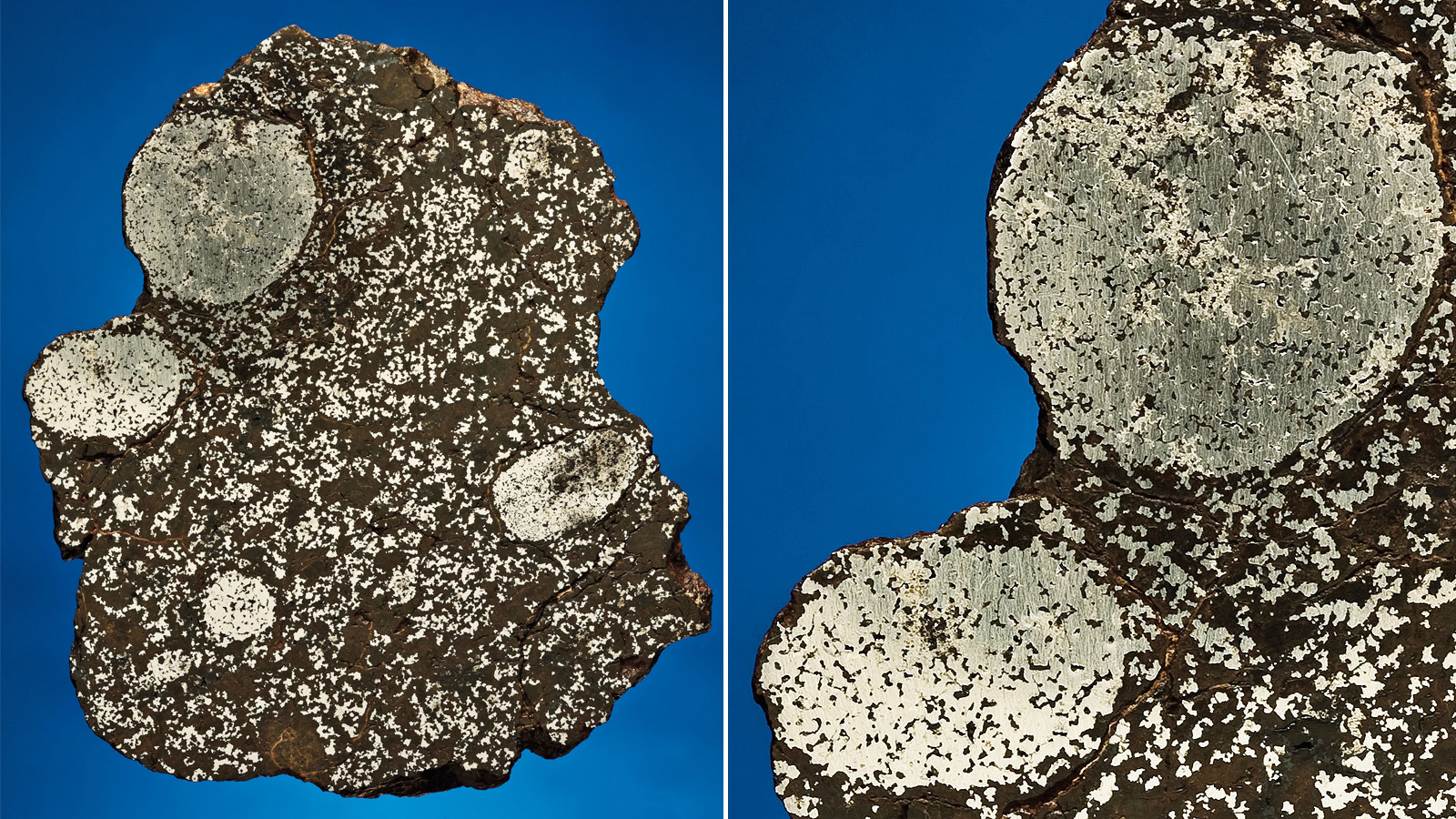
Picture: Heritage Auctions
The LL4 chondrite meteorites are among the most primitive and unaltered remnants of the Proto-Solar System, which makes them highly valued by scientists. They’re like a slice of time, approximately 4.565 billion years ago, during the formation of our Solar System. This specimen shows its clearly defined chondrules, some of which are very large, and its variety of colours, with its numerous dark green and orange-red to brown chondrules, and pretty orange matrix. The matrix also exhibits sparse silvery metal and metal sulphide grains.
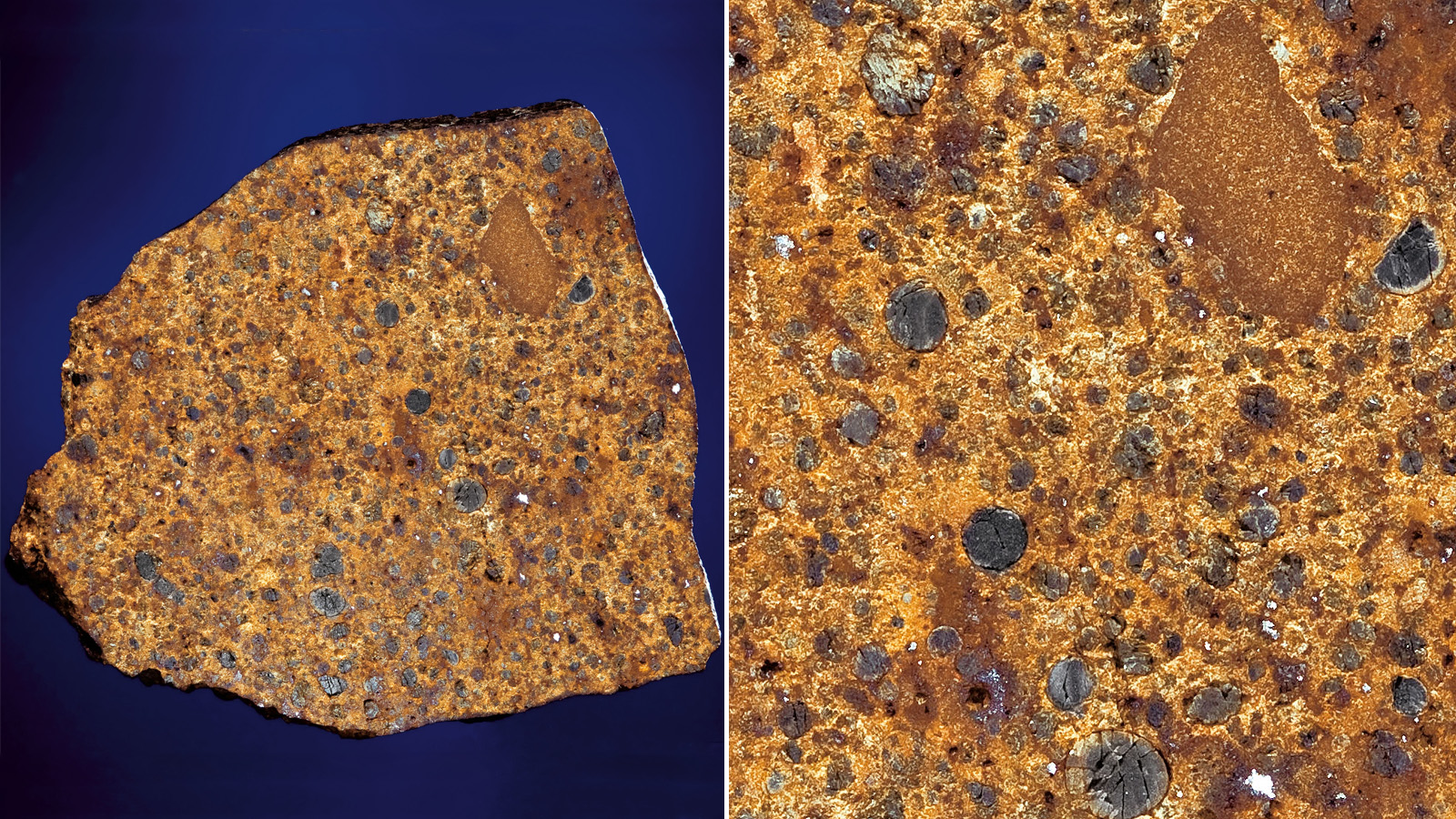
Picture: Heritage Auctions
This pallasite meteorite was found in Seymchan, Magadan District, Russia, in 2005.

Picture: Heritage Auctions
The Brahin meteorite. Exhibited in Naturmuseum Freiburg, Freiburg im Breisgau, Baden-Württemberg, Germany.
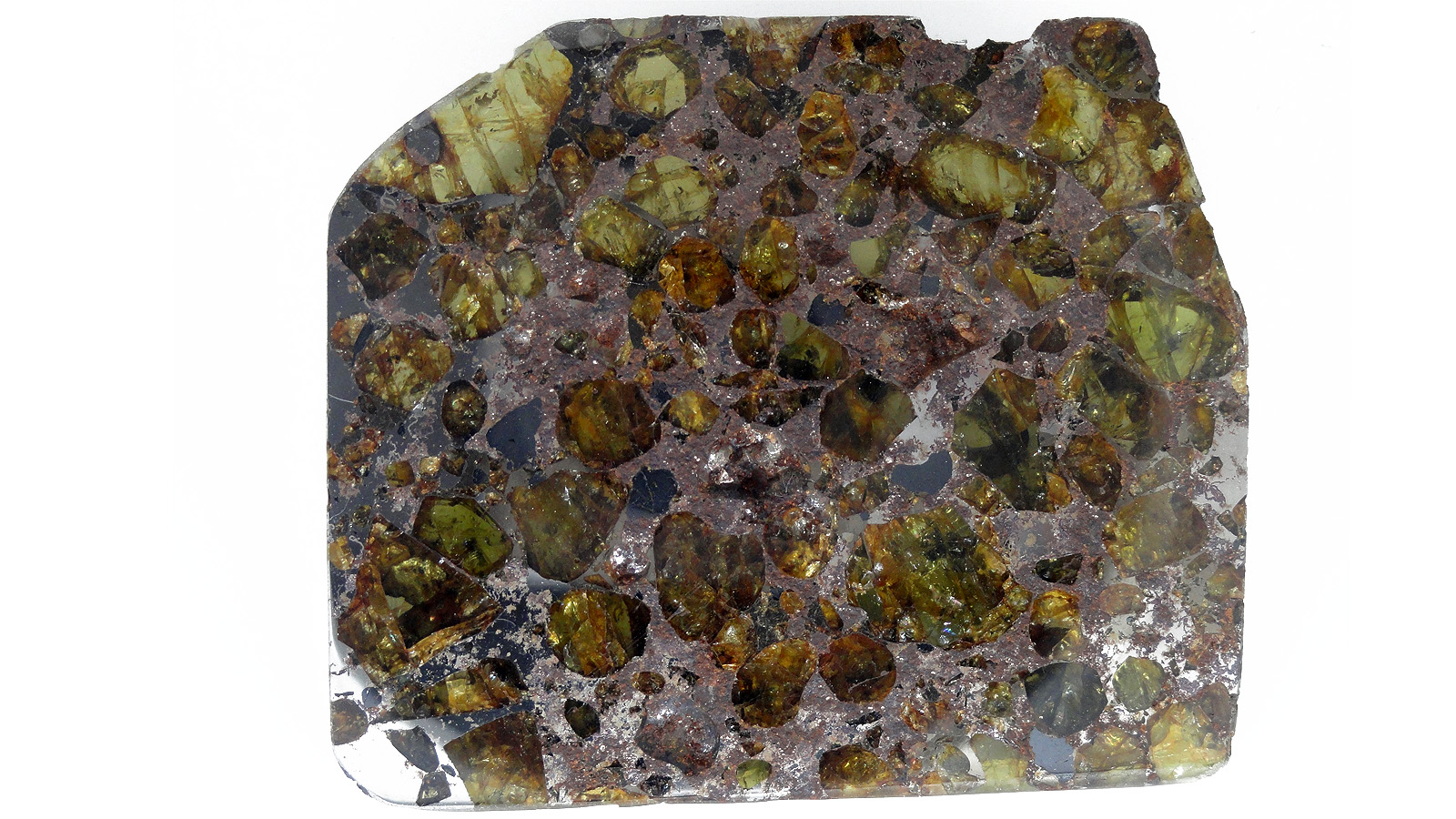
Picture: Daderot/Wikimedia Commons
This Brenham — a pallasitic American meteorite, filled with hundreds of gleaming circular olivine crystals — was found in Kiowa County, Kansas.
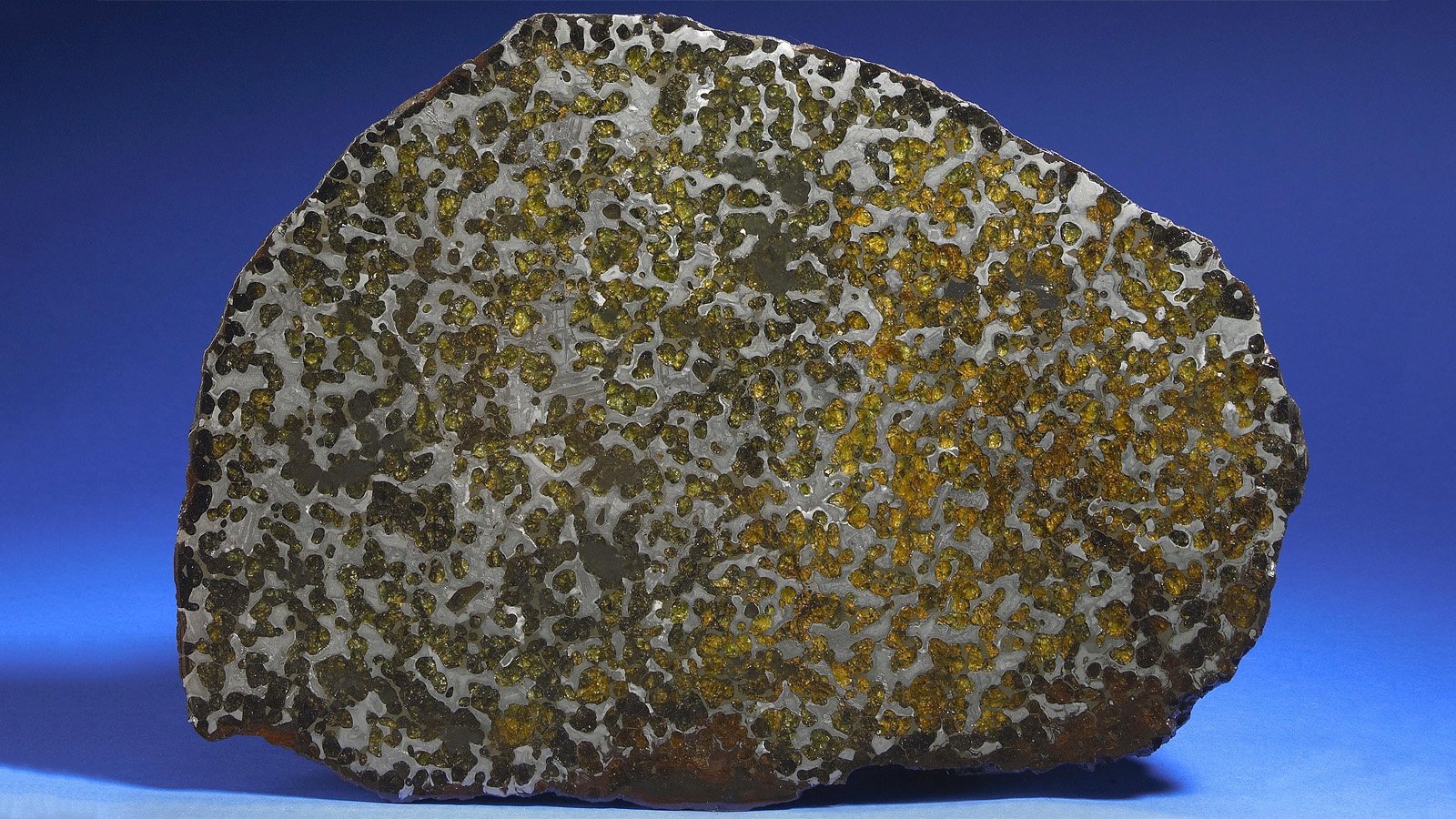
Picture: Bonhams Auctioneers
Top picture: a slice of the Imilac — Heritage Auctions
